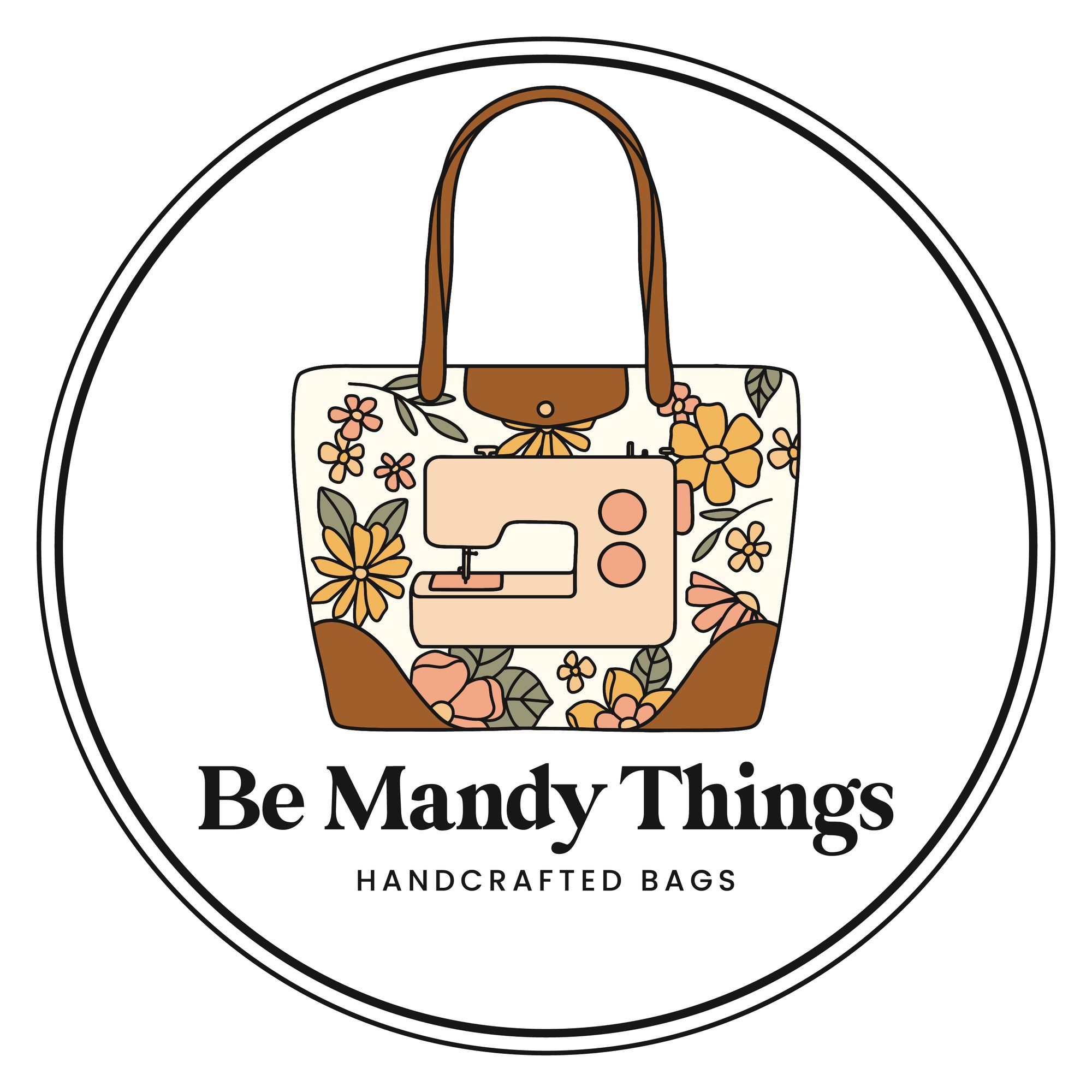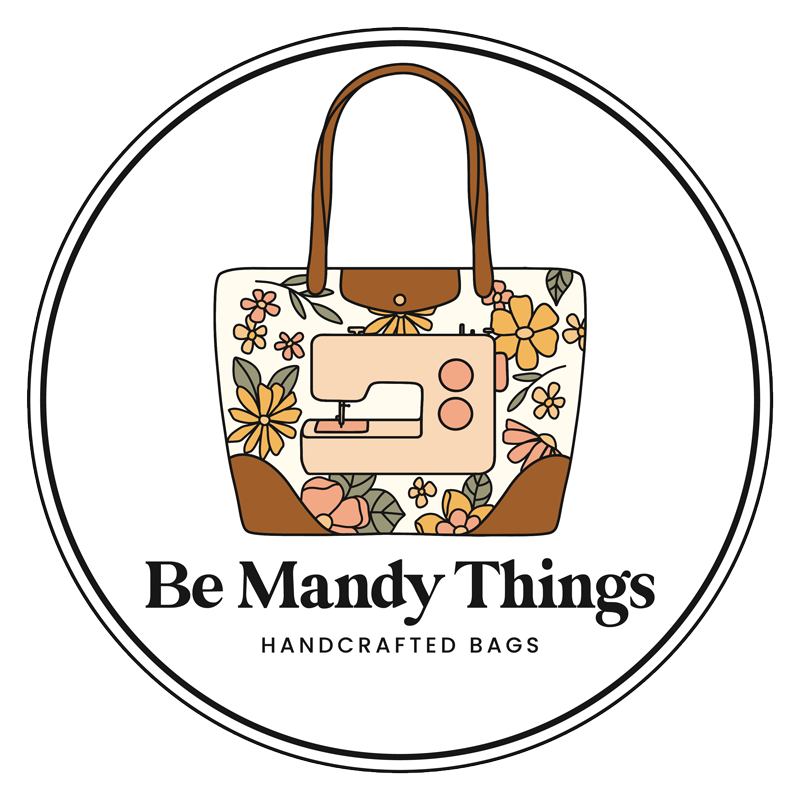FREE SHIPPING ON ORDERS $35+ or FREE LOCAL PICKUP
by Amanda Whisman May 19, 2024 1 Comment
Prepare for BBQ Season with Benartex Fabrics' Chillin' & Grillin' Collection! As a Brand Ambassador for Benartex Fabrics, I was lucky to get to play with this collection that is perfect for summer and all of the cook-outs coming up. The best part is you don’t have to leave your sewing room to enjoy some delicious barbecue! Burgers, hot dogs, shrimp and veggies - there is everything you need to create fun aprons, grill mitts, potholders, placemats and more for your backyard feasts. Click the logo to visit the collection!
This quick tutorial will show you how to make 4 placemats - they only take a few hours from start to finish - so you could whip these up in the morning and have a decked out table by afternoon!
 Mix & Match
Mix & Match  Reversible Placemats
Reversible Placemats  Same Top/Bottom
Same Top/Bottom
If you're more of a visual learner, I've got a quick video tutorial on my You Tube Channel - Check it out!
MATERIALS NEEDED:
Make sure to pre-wash your fabric to prevent any post-sewing shrinkage!
1️⃣ Begin with 2 yards of fabric (or 1 yard each for reversible). Make sure it is washed and pressed before cutting, then lay out flat on cutting mat.
2️⃣ Cut placemats at 19”W x 14”H, following fabric direction.
 14" Tall
14" Tall  19" Wide
19" Wide
 This collection includes a border stripe, which I used to cut 4 placemats. PRO TIP!!! Pay VERY careful attention to fabric direction when cutting measurements, remember 19" WIDE by 14" TALL.
This collection includes a border stripe, which I used to cut 4 placemats. PRO TIP!!! Pay VERY careful attention to fabric direction when cutting measurements, remember 19" WIDE by 14" TALL.
3️⃣ INTERFACING:
 Let's take a minute to talk about different types you can use. Depending on what look you are going for when completed will be determined by the type of interfacing you use. I have made many placemats, and I really like the finished look and feel of Pellon 911F. It's not too fluffy, not too rigid, and gives the placemat some structure without being stiff. Choose what works best for you.
Let's take a minute to talk about different types you can use. Depending on what look you are going for when completed will be determined by the type of interfacing you use. I have made many placemats, and I really like the finished look and feel of Pellon 911F. It's not too fluffy, not too rigid, and gives the placemat some structure without being stiff. Choose what works best for you.
Once you have chosen your interfacing, cut out 4 pieces measuring the same dimensions as the placemat, 19"W x 14"H.
Now you may adhere the interfacing to the wrong side of the top fabric, according to manufacturer's instructions. If using batting, you can spray baste or pin, or move on to step 4.
 PRO TIP! Make sure if interfacing is fusible, bumpy side is up (ask me how I know), this is the glue side that will adhere to the fabric.
PRO TIP! Make sure if interfacing is fusible, bumpy side is up (ask me how I know), this is the glue side that will adhere to the fabric.
4️⃣ It's time to start assembling the placemats!
 Place a top and bottom piece right sides together (RST).
Place a top and bottom piece right sides together (RST).
Choose a side to create the opening where you will be turning the placemat out after it is sewn together. I usually like to make the opening a little bigger than my hand.
 I place 4 fingers on a side, and mark above and below for the opening. You will not be sewing over this section, so make sure you pay attention to your marks, or you will sew the placemat completely shut and not be able to turn it out.
I place 4 fingers on a side, and mark above and below for the opening. You will not be sewing over this section, so make sure you pay attention to your marks, or you will sew the placemat completely shut and not be able to turn it out.
 Pin or clip around the outer edges of the placemat, just to keep the edges lined up until you get it to your sewing machine.
Pin or clip around the outer edges of the placemat, just to keep the edges lined up until you get it to your sewing machine.  Once you have the placemat at your sewing machine, start sewing at the bottom of the opening mark, using a 1/2" seam allowance (SA), making sure to backstitch a few times. Make sure you did not sew closed your opening!
Once you have the placemat at your sewing machine, start sewing at the bottom of the opening mark, using a 1/2" seam allowance (SA), making sure to backstitch a few times. Make sure you did not sew closed your opening!
Sew around all the sides of the placemat, stopping at the top of the opening, and backstitch again.


Do this for all placemats.
5️⃣ Here's where the magic happens! Part of the reason the seam allowance is so big, is for this trick right here.
 PRO TIP!! At the opening, you will cut away some of the seam allowance. This will create a tab, that will be folded in once you turn out the placemat, and helps for a smooth, straight edge of the finished placemat.
PRO TIP!! At the opening, you will cut away some of the seam allowance. This will create a tab, that will be folded in once you turn out the placemat, and helps for a smooth, straight edge of the finished placemat.
 If it helps, draw a line like I did here as a guide for how to cut into the seam allowance. I like to live on the edge, and I use my rotary cutter, but I've also done this many times with placemats and bagmaking. If you're nervous, draw the line, and use scissors to cut away seam allowance.
If it helps, draw a line like I did here as a guide for how to cut into the seam allowance. I like to live on the edge, and I use my rotary cutter, but I've also done this many times with placemats and bagmaking. If you're nervous, draw the line, and use scissors to cut away seam allowance.

 You will end up with a "tab" which will make it easy to insert the seam allowance into the hole after it is turned out, making for a smooth, straight closing.
You will end up with a "tab" which will make it easy to insert the seam allowance into the hole after it is turned out, making for a smooth, straight closing.
 Cut away the seam allowance from the four corners, taking care not to cut into the seam.
Cut away the seam allowance from the four corners, taking care not to cut into the seam.

 Reach your hand in to an opposite corner, grab hold and pull placemat inside out.
Reach your hand in to an opposite corner, grab hold and pull placemat inside out.

 Pop out the corners with a sharp tool, but do not poke a hole in the corners.
Pop out the corners with a sharp tool, but do not poke a hole in the corners.

 Once completely turned, with corners poked out, roll the edges of the seams with your fingers to help flatten before taking to the iron to press. PRO TIP! Another reason the seam allowance is 1/2" is to help with rolling the seams to make them flat. I've sewed these using 1/4" SA, as well as 3/8" SA, and it is a struggle to get perfectly flat seams. This is why I like the 1/2" SA.
Once completely turned, with corners poked out, roll the edges of the seams with your fingers to help flatten before taking to the iron to press. PRO TIP! Another reason the seam allowance is 1/2" is to help with rolling the seams to make them flat. I've sewed these using 1/4" SA, as well as 3/8" SA, and it is a struggle to get perfectly flat seams. This is why I like the 1/2" SA.
 Also, finger press the extra seam allowance at the opening to help keep it inside before pressing.
Also, finger press the extra seam allowance at the opening to help keep it inside before pressing.
 Press placemat to flatten seams, as well as opening.
Press placemat to flatten seams, as well as opening.
6️⃣ Topstitch to close the opening, using a 3.5 mm stitch length. I like to topstitch 3 times. I sew once around using a 1/8" SA. From that stitch line, I will sew another row 1/4" away from that stitch. Then, I will sew a 1/2" away from the previous 1/4" stitch line. See examples below.

 Topstitch 1/8" from edge
Topstitch 1/8" from edge
 Topstitch 1/4" away from previous 1/8" stitch line
Topstitch 1/4" away from previous 1/8" stitch line
 Topstitch 1/2" away from previous 1/4" stitch line
Topstitch 1/2" away from previous 1/4" stitch line
 Final showing all 3 topstitch lines
Final showing all 3 topstitch lines
7️⃣ Your placemat is done! Final measurements should be 13"H x 18"W. Enjoy your new summer table! Feel free to leave a comment, share with a sewing bestie or ask a question.
Happy Sewing!



Free Zipper Pouch Pattern when you sign up for our Newsletter!
Handcrafted Bags and Sewing Patterns available on Be Mandy Things Website!
Join the Be Mandy Things Sewing Patterns Facebook page.
Follow me on Instagram and Facebook for daily sneak peeks and updates.
Comments will be approved before showing up.
by Amanda Whisman December 22, 2024
by Amanda Whisman December 22, 2024
by Amanda Whisman December 22, 2024
Join our email list to score your very own BAG MAKER SUPPLY LIST and snag your COMPLIMENTARY Sunset Pouch Sewing Pattern!


Valerie Murray
December 22, 2024
Do we need to quilt the batting on the placemats so it won’t bunch up after washing. Seems like too big a space to leave unquilted.